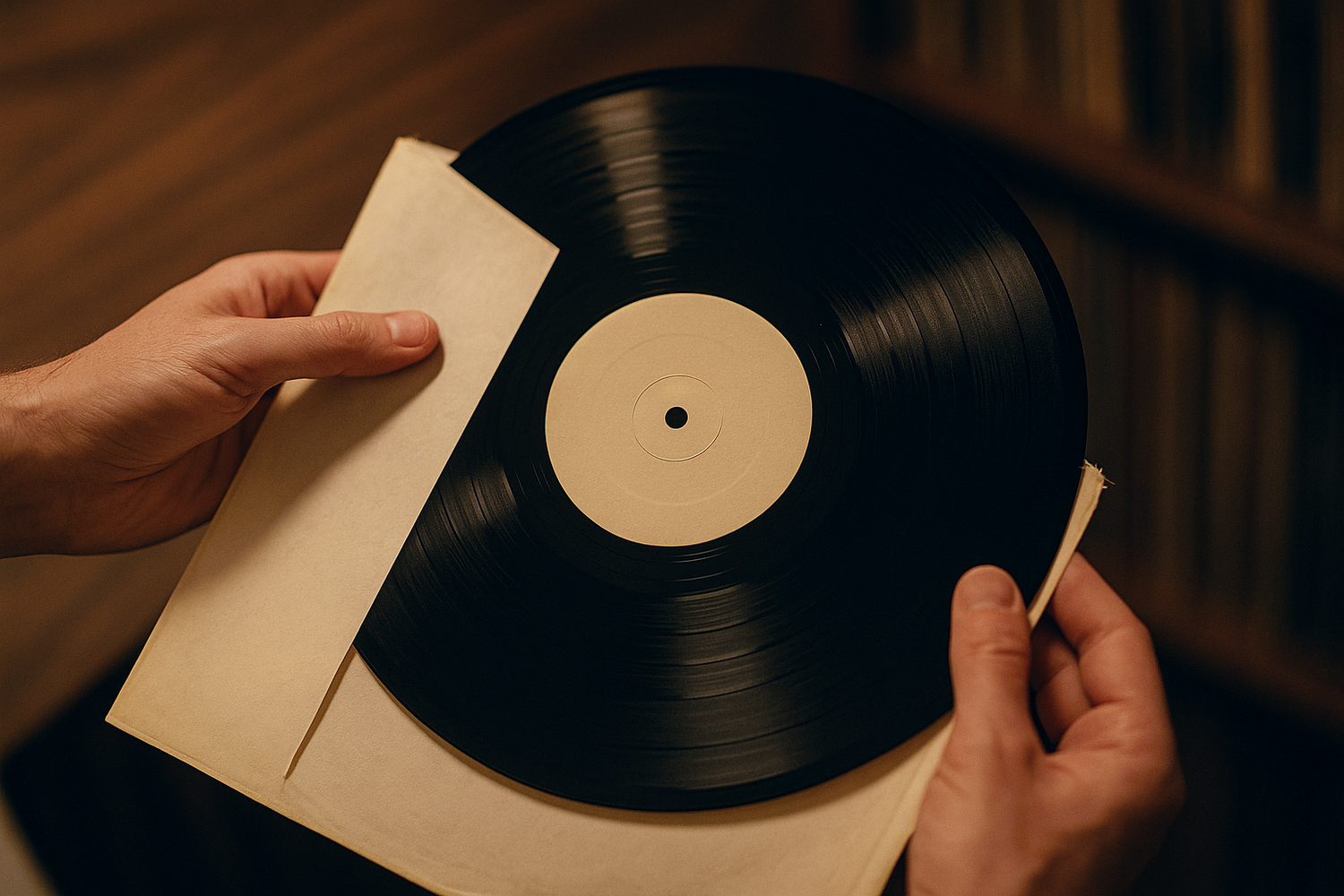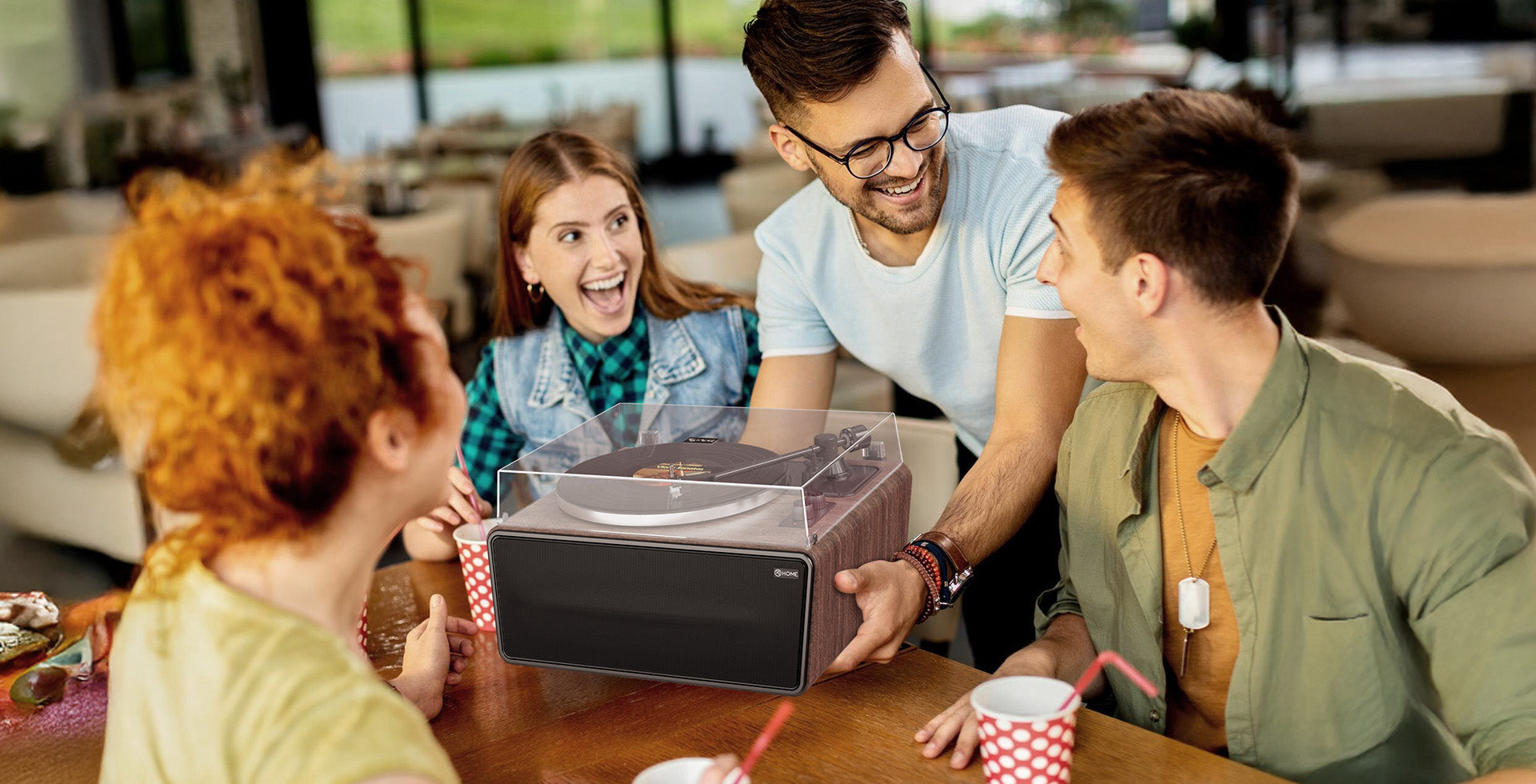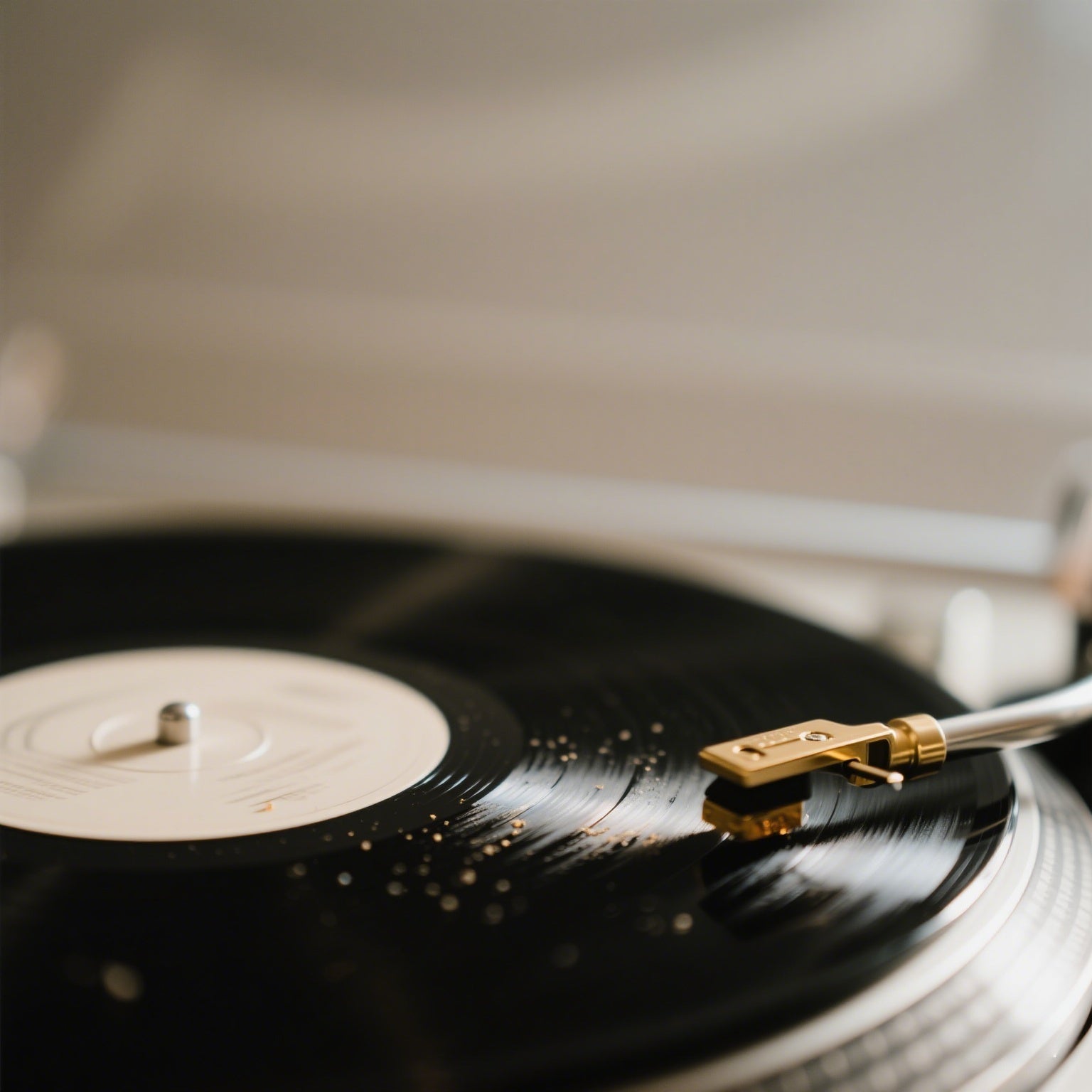So, you're on the hunt for one of the "best record players in 2025." It's a quest many vinyl lovers undertake, hoping to find that perfect deck to spin their cherished LPs. But let's be brutally honest: most "Top 10" lists you'll find are often a superficial skim of popular models, sometimes swayed by marketing budgets rather than pure, unadulterated performance and engineering integrity.
At XJ-HOME, we believe in empowering you with deeper understanding. (Perhaps you've explored some of our thoughts on audio philosophy on the XJ-HOME blog?) This isn't just another list. This is a guide to understanding what makes a turntable truly exceptional, helping you navigate the landscape with a critical ear and an informed mind. We'll look at archetypes of excellence, grounded in first principles, so you can find a record player that doesn’t just play music, but truly connects you to it.
Deconstructing "Best": What Really Matters in a Turntable?
Before we even mention a model, let's establish what "best" should mean from an engineering and experiential standpoint. It's not about the shiniest features or the most Instagrammable design (though aesthetics have their place). It's about the fundamentals:
-
Speed Stability & Accuracy: The platter must rotate at precisely 33⅓ or 45 RPM with minimal deviation (wow & flutter). This is paramount for correct pitch and timing. The motor type (belt drive, direct drive, idler wheel) and its control system are critical here. [External Link: Read an in-depth article on turntable drive systems from a source like the Audio Engineering Society or a reputable audio journal for more technical details.]
-
Tonearm Precision & Geometry: The tonearm's job is to allow the stylus to trace the record groove with pinpoint accuracy and minimal friction. Key aspects include bearing quality, effective mass (matching the cartridge), adjustability (VTA/SRA, azimuth, anti-skate), and resonance control. A poorly designed or mismatched tonearm can cripple the performance of even the best cartridge.
-
Resonance Control & Isolation: Vibrations are the enemy of clear vinyl playback. These can come from the motor, the environment, or even the stylus tracing the groove. A well-designed turntable will have a plinth (base) and platter engineered to damp or dissipate unwanted resonances, and effective isolation feet to prevent external vibrations from reaching the stylus.
-
Build Quality & Material Science: The choice of materials for the plinth, platter, and tonearm significantly impacts resonance, stability, and longevity. Precision engineering and tight manufacturing tolerances are non-negotiable for high performance.
-
Upgradability & System Synergy: For many, a turntable is an investment that can grow with their system. The ability to upgrade components like the cartridge, phono stage, or even the tonearm itself can be a crucial factor. Furthermore, the turntable must work in harmony with your phono preamplifier and the rest of your audio chain. (XJ-HOME often discusses the importance of system synergy in our audio setup guides).
The blind spot for many buyers? Focusing on one "star" feature while neglecting these foundational elements. The "best" turntable isn't a universal concept; it's the one that excels in these fundamentals and aligns with your specific needs, listening philosophy, and budget.
Navigating the Turntable Landscape in 2025: Archetypes of Excellence
Instead of a rigid, ranked list, let's explore categories or "archetypes" of turntables that represent different approaches to achieving vinyl nirvana in 2025. Within these, we'll mention examples that embody the principles, but the focus is on why they excel.
1. The Pragmatist's Entry to True Fidelity
-
User Profile: New to serious vinyl or upgrading from a basic setup; values good sound out-of-the-box, reliability, and ease of use without breaking the bank.
-
Key Characteristics (2025 Focus): Solid build, decent pre-fitted cartridge, often an integrated (and bypassable) phono stage of respectable quality, low-resonance plinth, and a well-engineered, simple tonearm. Look for brands with a proven track record.
-
Exemplary Features: Quality MDF or acrylic plinth, aluminum platter, carbon fiber or well-damped aluminum tonearm, reputable entry-level audiophile cartridge (e.g., Ortofon 2M Red, Audio-Technica VM95ML).
-
Pros: Great value, plug-and-play (mostly), offers a genuine taste of high-fidelity analog.
-
Cons/Blind Spots: Limited upgradability on some models, integrated phono stages might be a bottleneck later. Don't be fooled by "USB output" as a primary quality indicator; focus on the analog performance.
-
Models to Research (representing the archetype): Rega Planar 1, Pro-Ject Debut Carbon EVO, U-Turn Orbit (with upgrades), Fluance RT85. (Always check the latest 2025 reviews for current iterations).
2. The Aspiring Audiophile's Upgradable Workhorse
-
User Profile: Serious about sound quality, enjoys tinkering and optimizing, sees their turntable as a long-term platform for growth.
-
Key Characteristics (2025 Focus): Excellent core components (motor, bearing, plinth, tonearm base) that justify future upgrades. Tonearm should allow for easy cartridge swapping and precise alignment.
-
Exemplary Features: Heavy platter (acrylic, Delrin, or alloy), high-quality main bearing, robust motor control, tonearm with VTA/SRA adjustment, options for external power supplies.
-
Pros: Can achieve truly high-end sound incrementally, satisfying for hobbyists.
-
Cons/Blind Spots: Initial cost might not include a high-end cartridge or phono stage; the "upgrade bug" can be expensive. Requires more setup knowledge.
-
Models to Research: Rega Planar 3, Pro-Ject X1/X2, Technics SL-100C/SL-1500C (for direct-drive fans wanting upgradability). XJ-HOME has a detailed guide on choosing your next cartridge upgrade that might be helpful here.
3. The Direct-Drive Precision Instrument
-
User Profile: Values absolute speed stability, quick startup, and robust build; often (but not exclusively) includes DJs, archivists, or listeners sensitive to pitch variations.
-
Key Characteristics (2025 Focus): Advanced coreless direct-drive motors with sophisticated servo control systems, high-torque performance, heavy and well-damped platters, and robust, precisely engineered tonearms.
-
Exemplary Features: Quartz-lock speed control, substantial plinth construction (often multi-layered with damping materials), high-quality S-shaped or straight tonearms with detachable headshells for easy cartridge swapping.
-
Pros: Rock-solid speed, durability, often excellent bass definition and dynamic impact.
-
Cons/Blind Spots: Older or cheaper direct-drive designs can suffer from "cogging" or motor noise if not well-implemented. The "DJ turntable" stigma sometimes unfairly overshadows their audiophile potential. [External Link: Explore technical papers on direct-drive motor design, e.g., from Technics' own engineering resources or academic databases.]
-
Models to Research: Technics SL-1200GR/G/GAE (benchmark for a reason), high-end models from Reloop (like the Turn X) or Pioneer DJ (PLX-1000, assessed critically for audiophile use).
4. The Belt-Drive Musicality & Isolation Champion
-
User Profile: Prioritizes a fluid, organic sound, often described as "musical"; values isolation from motor noise and a focus on midrange richness.
-
Key Characteristics (2025 Focus): Sophisticated motor isolation techniques, carefully chosen belt materials, low-friction bearings, plinth and platter materials selected for their specific resonant properties, and tonearms designed for synergy with specific cartridge types (often moving coil).
-
Exemplary Features: External motor pods, multi-density plinths, precision-machined sub-platters, high-performance tonearms (e.g., from SME, Jelco, or proprietary designs).
-
Pros: Can offer exceptional retrieval of low-level detail and a very engaging, immersive soundstage.
-
Cons/Blind Spots: Can be more sensitive to setup and placement. Speed stability, while often excellent, might not match the absolute precision of the best direct drives without significant engineering investment. The term "musicality" can be subjective; listen for genuine resolution, not just euphonic coloration.
-
Models to Research: Linn Sondek LP12 (a classic, continuously evolved), Rega Planar 6/8/10, high-end models from Clearaudio, VPI, SME.
5. The "Cost-No-Object" Engineering Statement
-
User Profile: The dedicated audiophile seeking the current state-of-the-art, where engineering boundaries are pushed and price is a secondary consideration.
-
Key Characteristics (2025 Focus): Use of exotic materials (titanium, carbon fiber, specialized alloys, constrained layer damping), extreme precision manufacturing, innovative solutions to problems of resonance, speed control, and stylus tracing. Often very heavy and complex.
-
Exemplary Features: Air bearings, magnetic levitation platters, multiple motors, vacuum hold-down systems, highly advanced tonearm designs with intricate adjustment capabilities.
-
Pros: Potential for unparalleled sound reproduction, pushing the limits of what's possible with vinyl.
-
Cons/Blind Spots: Extremely expensive. The law of diminishing returns is very steep here; improvements are often incremental for substantial price jumps. Requires an equally high-end system to realize their potential. Setup can be exceptionally complex.
-
Models to Research: Top-tier offerings from Kronos Audio, TechDAS, Continuum Audio Labs, Döhmann Audio, flagship SME models.
Beyond the Turntable: The Ecosystem Matters in 2025
Remember, a turntable, no matter how "best," is only one part of the analog chain.
-
The Cartridge: This is the first point of contact. Its quality and compatibility with your tonearm are critical. (Perhaps our XJ-HOME guide to understanding phono cartridges can shed more light).
-
The Phono Preamplifier: This boosts the tiny signal from the cartridge and applies RIAA equalization. A poor phono stage will bottleneck even the finest turntable.
-
Setup: Proper alignment, tracking force, and VTA are not optional; they are essential for optimal sound and record care.
-
Maintenance: Regular cleaning of records and stylus, and eventual stylus replacement, are ongoing costs and responsibilities.
A Blind Spot for Many: The "upgrade treadmill." While upgrading can be fun, constantly chasing the next best thing without fully understanding your current system's potential (or limitations) can be a frustrating and expensive path. Focus on synergy and genuine improvements in those core principles we discussed.
Conclusion: Your "Best" Awaits Your Definition
The "Top 10 Best Record Players in 2025" isn't a list we can definitively write for you, because the "best" is deeply personal and dependent on your individual journey in sound. What we at XJ-HOME hope to have provided is a framework for critical thinking and a guide to understanding the principles that underpin true audio excellence.
Consider these archetypes, do your research (seek out detailed technical reviews, not just star ratings), and most importantly, listen if you can. Define what "best" means for your ears, your music, and your space. The most rewarding turntable is the one that consistently makes you want to pull out another record and lose yourself in the music.
Happy listening, and may your 2025 be filled with analog bliss! If you're looking to build or refine your entire audio setup, explore more insights and curated components at xenonjade.com.





Leave a comment
All comments are moderated before being published.
This site is protected by hCaptcha and the hCaptcha Privacy Policy and Terms of Service apply.